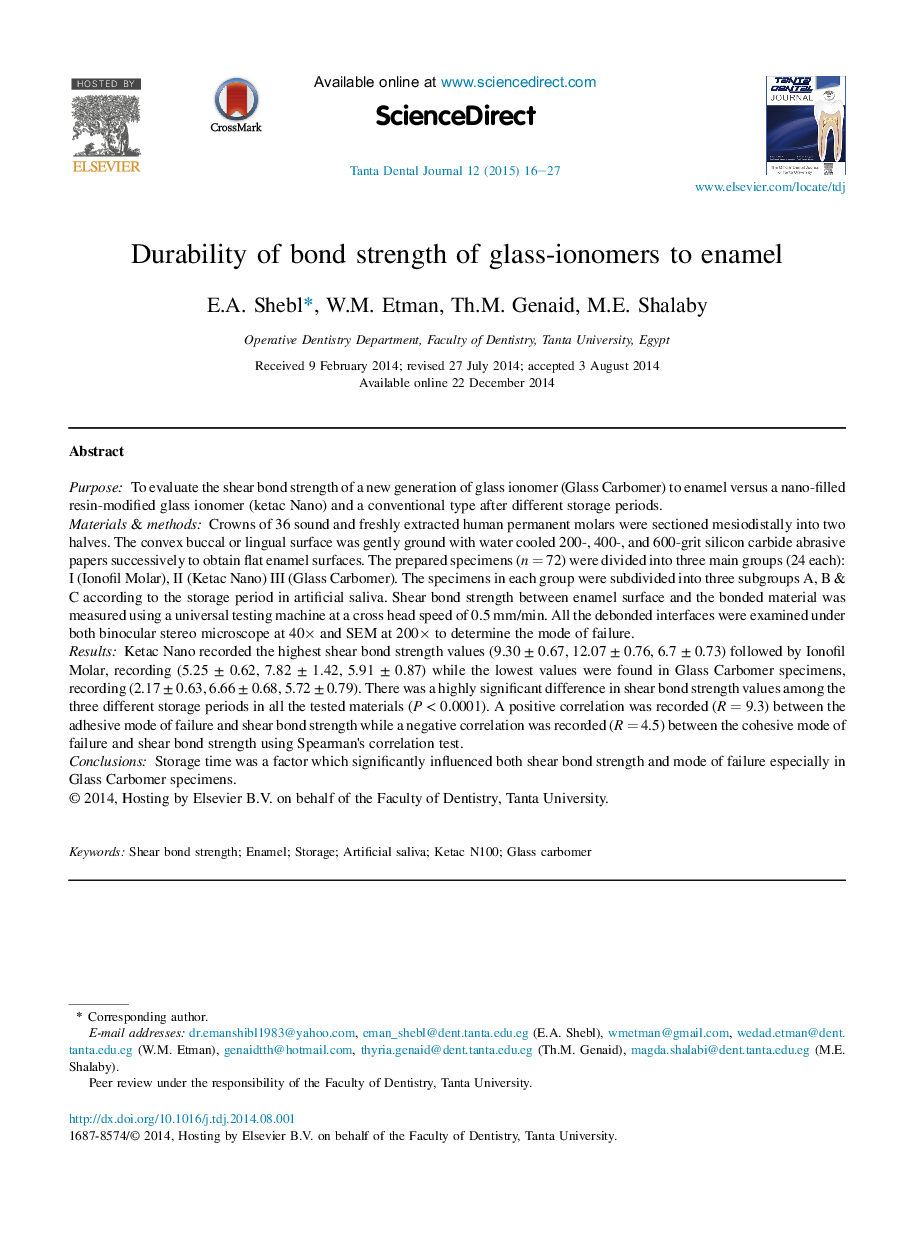| کد مقاله | کد نشریه | سال انتشار | مقاله انگلیسی | نسخه تمام متن |
|---|---|---|---|---|
| 3179612 | 1200465 | 2015 | 12 صفحه PDF | دانلود رایگان |
PurposeTo evaluate the shear bond strength of a new generation of glass ionomer (Glass Carbomer) to enamel versus a nano-filled resin-modified glass ionomer (ketac Nano) and a conventional type after different storage periods.Materials & methodsCrowns of 36 sound and freshly extracted human permanent molars were sectioned mesiodistally into two halves. The convex buccal or lingual surface was gently ground with water cooled 200-, 400-, and 600-grit silicon carbide abrasive papers successively to obtain flat enamel surfaces. The prepared specimens (n = 72) were divided into three main groups (24 each): I (Ionofil Molar), II (Ketac Nano) III (Glass Carbomer). The specimens in each group were subdivided into three subgroups A, B & C according to the storage period in artificial saliva. Shear bond strength between enamel surface and the bonded material was measured using a universal testing machine at a cross head speed of 0.5 mm/min. All the debonded interfaces were examined under both binocular stereo microscope at 40× and SEM at 200× to determine the mode of failure.ResultsKetac Nano recorded the highest shear bond strength values (9.30 ± 0.67, 12.07 ± 0.76, 6.7 ± 0.73) followed by Ionofil Molar, recording (5.25 ± 0.62, 7.82 ± 1.42, 5.91 ± 0.87) while the lowest values were found in Glass Carbomer specimens, recording (2.17 ± 0.63, 6.66 ± 0.68, 5.72 ± 0.79). There was a highly significant difference in shear bond strength values among the three different storage periods in all the tested materials (P < 0.0001). A positive correlation was recorded (R = 9.3) between the adhesive mode of failure and shear bond strength while a negative correlation was recorded (R = 4.5) between the cohesive mode of failure and shear bond strength using Spearman's correlation test.ConclusionsStorage time was a factor which significantly influenced both shear bond strength and mode of failure especially in Glass Carbomer specimens.
Journal: Tanta Dental Journal - Volume 12, Issue 1, March 2015, Pages 16–27
